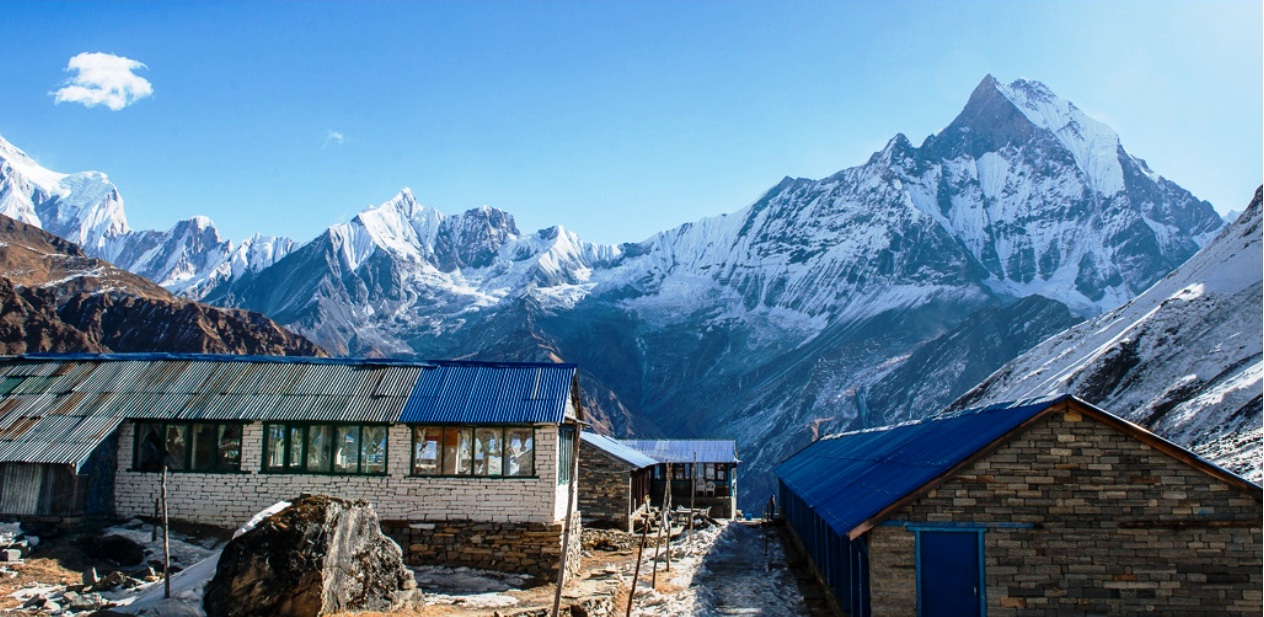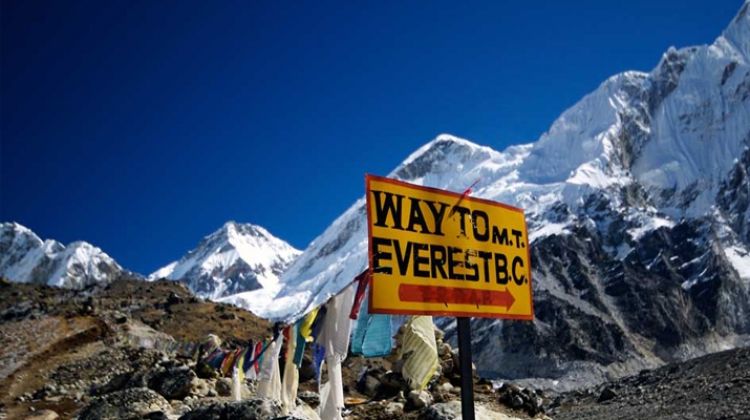Langtang Gosaikunda and Helambu Trek

Langtang Gosaikunda and Helambu Trek is a beautiful journey in Nepal through lush forests, quaint villages, abundant wildlife and astounding views of the majestic Himalayas. This trek start from Kathmandu with tours of the city’s UNESCO World Heritage Sites. Then we drive to Syabrubesi which is a Tamang village located on the banks of the Bhote Koshi River and start your trek. We reach Kyanjin Gompa and then climb Tserko Ri the next day.
From there we get wonderful views of the Langtang Lirung (7,200m/23,622ft) range. Next, we continue trekking in the beautiful Langtang Valley and reach Gosaikunda which is a revered place of pilgrimage for both Buddhists and Hindus. Gosaikunda Lake water is believed to have magical healing powers. We pass by a few more lakes on our trek and cross the Laurebina Pass. Our trek in the Helambu Valley begins after crossing the pass.
Another highlight of our hike is to reach the top of Ama Yangri at 3,800m. The view of the Himalayas from the top of the hill is believed to rival that of Poon Hill. From here, Mt. Shishapangma and the Langtang ranges seem so close that we feel that we can almost touch them. We continue trekking in the Helambu region for a few more days and end our remarkable journey to the mountains with a drive to Kathmandu
- Arrival in Kathmandu (1,300m/4,264ft) and O/nt.
- Kathmandu: sightseeing and trek preparation and O/nt at hotel
- Drive from Kathmandu to Syabrubesi (1,550m/5,100ft): 7-8 hrs and O/nt at hotel or Guest House
- Trek from Syabrubesi to Lama Hotel (2,380m/7,830ft): 6 hrs and O/nt at hotel or Guest House
- Trek to Mundu (3543m/11,621ft) via Langtang village: 6-7 hrs and O/nt at hotel or Guest House
- Mundu to Kyangjin Gompa (3,870m/12,697ft): 4-5 hrs and O/nt at hotel or Guest House
- Acclimatization: explore Tserko Ri (5,000m/16,404ft) 7-8 hrs and O/nt at hotel or Guest House
- Kyangjin Gompa to Lama Hotel: 6-7 hrs and O/nt at hotel or Guest House
- Lama Hotel to Thulo Syabru (2,230m/ 7,316 ft): 5-6 hrs and O/nt at hotel or Guest House
- Thulo Syabru to Shin Gompa: 3-4 hrs O/nt at hotel or Guest House
- Shin Gompa to Gosaikunda (4,460m/14,632ft): 5-6 hrs O/nt at hotel or Guest House
- Gosaikunda to Ghopte (3,440m/11,286ft): 6-8 hrs O/nt at hotel or Guest House
- Ghopte to Melamchigaon (2,560m/8,399ft): 6-7 hrs O/nt at hotel or Guest House
- Melamchigaon to Tarkeghyang (2,590m/8,497ft): 5-6 hrs O/nt at hotel or Guest House
- Tarkeghyang to Sermathang (2,610m/8,563ft): 3-5 hrs O/nt at hotel or Guest House
- Trek to Melamchi Bazaar, drive to Kathmandu: 3-4 hours trek, 2 hrs drive and O/nt at Hotel
- Final departure
Includes:
- Pickups and drop offs from airport(s) and hotel(s)
- 3-star hotel in Kathmandu and teahouses during the trek on a twin-shared basis
- Breakfast in Kathmandu and all meals during the trek
- Transportation in a comfortable private vehicle
- English-speaking, trained and experienced guide
- Potter service charges during the trek
- All fees for sightseeing including entry fees for visiting temple(s),monument(s), trekking and national parks
- Farewell dinners
- Down jacket, four-seasonal sleeping bag, Himalayan Glacier Trekking duffel bag, t-shirt, and trekking map (down jacket and sleeping bag are to be returned after trip completion)
- Medical kit
- All necessary paper work(s) and permit(s)
- All applicable taxes and service charges
- Pickups and drop offs from airport(s) and hotel(s)
- 3-star hotel in Kathmandu and teahouses during the trek on a twin-shared basis
- Breakfast in Kathmandu and all meals during the trek
- Transportation in a comfortable private vehicle
- English-speaking, trained and experienced guide
- Potter service charges during the trek
- All fees for sightseeing including entry fees for visiting temple(s),monument(s), trekking and national parks
- Farewell dinners
- Down jacket, four-seasonal sleeping bag, Himalayan Glacier Trekking duffel bag, t-shirt, and trekking map (down jacket and sleeping bag are to be returned after trip completion)
- Medical kit
- All necessary paper work(s) and permit(s)
- All applicable taxes and service charges
Ask for Trekking Equipments.
Is there any advice on Altitude Sickness?
Altitude mountain sickness can affect everyone while trekking including young and healthy people and is a genuine concern in the Khumbu region. If you feel dizzy, suffer palpitations or severe headaches, return immediately to a lower altitude. Do not take altitude sickness lightly. It can be fatal! When trekking, its vital to realize that you must always hike at a pace that is convenient to your body…& not to anyone else’s, make sure you feel comfortable when trekking and listen to your body…always. These are the questions we are often asked and we hope that you will find the answers useful. Please don’t hesitate to contact us if you have any further queries.
It is healthy to take shower during trek?
You can get hot shower services throughout the trip. However, the higher you climb the less pleasant it will be. It’s better to be on the safe side of things.
What do I have to carry with me on trek?
You will only have to carry a daypack, which should be a reasonable size to carry a water bottle, sunscreen, camera, etc. Your other packs are carried by porters. Again we stress on the wisdom of always ‘travel light’.
Does Tea house have electricity to charge devices?
Most of the tea houses have electricity facilities during the trekking period. You can charge your electronic devices on the trail.
How can I keep my luggage?
You can keep your luggage and valuable items in a locker at the hotel in Kathmandu for free of charge.
What is the weight limit of luggage?
The weight limit for the trek is 15 kg per guest, as it is the maximum weight that the porters can carry. It is also important to note that "hard" luggage poses a problem: soft "duffel-bags" are recommended which we provide. The lighter you are the better for the trails.
Where should I get my money exchange?
You can get your money exchanged at your hotel or we will recommend you the better place where you can get good exchanging rates. So once you are here in Kathmandu, visit us for further information.
Is it okay to get Nepal visa at airport or in advance?
Obtaining a Nepalese visa on arrival is easier except that you may have to spend some precious time queuing. If you get your visa in advance, you can avoid the queue. Also, don’t forget to bring cash as ATMs are not available at the airport. Note: If you are staying for more than 15 days, don’t forget to arrange a visa for 30 days.
How do I find you at the airport?
Our airport representative and a vehicle will be waiting you at the arrival gate of the airport; in his hand will be a plaque board holding your name clearly written on the board or paper. You can’t lose us.
Do you book lodges before or during the trek?
We accommodate trekking groups in local lodges available on the trail. As it is not possible to book the rooms days in advance, we send a porter few hours ahead of the group each day to book the rooms.
How can I enter into Nepal?
You can enter into Nepal both by land and flight. Several Airlines have direct flights to Kathmandu from London, Paris, Frankfurt, Doha, Osaka, Shanghai, Moscow, Bangkok, Singapore, Hongkong, Karachi, Bombay, Delhi, Calcutta, Paro, Dhaka, Lhasa and Varanasi.
What kind of Accommodation I can have during the trip?
In City like Kathmandu, Pokhara, Nagarkot we do provide star hotel as per your request and during the trekking, we will provide tea house accommodation. A Tea House is the combination of guest house, restaurant, and social hang out. Private rooms are available in most Tea Houses, except for high altitudes ones where it will be just dormitories. The lodges are fairly basic. The rooms are spare with twin beds and very little additional furniture. Blankets are generally provided. Most bathrooms are shared and toilets can be either squat type or the western version. Most of the Tea Houses have running water facility. Many of them have hot water available for bathing at additional cost. Solar heaters depend on day’s weather. But we discourage our groups from using water heated by wood, as lack of firewood in most villages is a big environmental concern in Nepal. It is advisable to carry wet wipes as an alternative
There is a large dining room-cum-lounge, warmed by stove (an iron cylinder, fitted with a chimney duct, in which a log fire is lighted). There is normally no electric lighting in the rooms unless the village has hydroelectric power. The dining room usually has solar lighting. Most tea houses now also have electricity for charging small appliances - mobile phones and cameras - and there may be a small charge for this.
During a Tea House trek you will usually have breakfast and dinner in the Tea House; lunch will be eaten at one of the trail side restaurants. Every Tea House serves the traditional Nepali meal Dal Bhat (rice and lentils), as well as a variety of different food items, such as rice, vegetables, noodles, potatoes and soup. Some have Nepali versions of western food such as pizza, pasta and French fries. Soft drinks, snacks and beer are available in most of the Tea Houses and trail side restaurants. And of course Nepali milk tea is served everywhere.
All tea houses have boiled water for trekkers. We discourage the purchase of bottled water while on the trail. The plastic bottles are difficult to dispose off and have become an environmental problem.
Trek Facts
Trek Name: Langtang Gosaikunda and Helambu Trek
Trek Days: 17 Days
Total Price: 1450 USD
Trek Season: Mar - May and Sep - Nov
Trek Package: Budget/Standard/Deluxe
Mode of Transfer: Flight, Car, Bus
Start/End of Trek: Kathmandu, Nepal
Group Size: 01 to 12 Pax
Trek Altitude: 5,000m/16,404 ft
Trek Difficulty: Easy to moderate
Accomodation Hotel in Kathmandu
Culture Kshetri, Janajati



